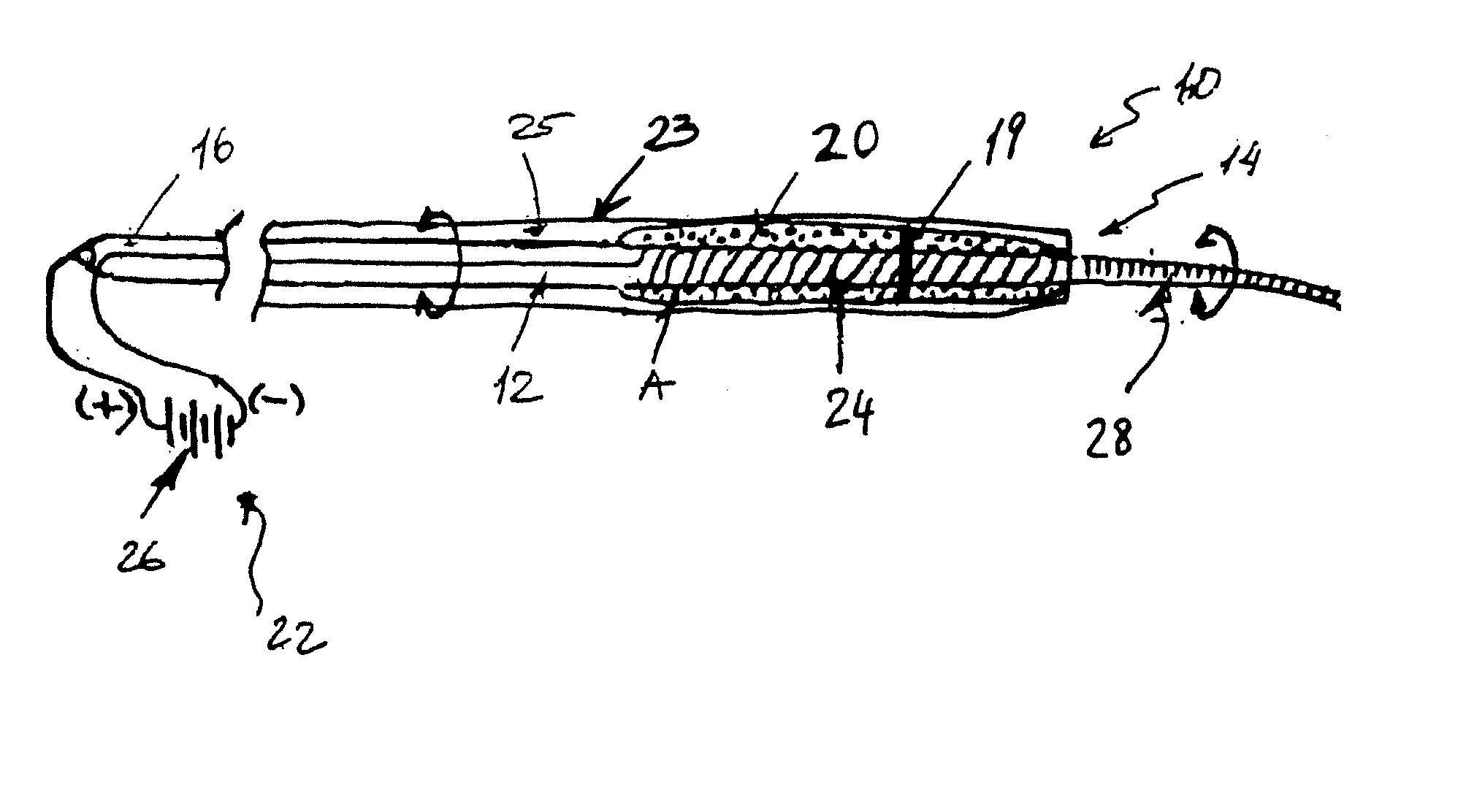Devices and methods for removing a matter from a body cavity of a patient
a technology which is applied in the field of devices and methods for removing a matter from a patient's body cavity and delivering a therapeutic agent, can solve problems such as polymer expansion, and achieve the effects of improving the positive outcome of the removal procedure, simple and economical, and reliable operation of the devi
- Summary
- Abstract
- Description
- Claims
- Application Information
AI Technical Summary
Benefits of technology
Problems solved by technology
Method used
Image
Examples
example 1
[0091] Under fluoroscopic and / or digital roadmap imaging, an appropriate guiding catheter (with or without a distal occlusive balloon) is navigated into the cervical artery (i.e., the internal carotid or vertebral artery), serving the distal intracranial circulation affected by the occlusive thromboembolus or intraluminal foreign body (“target”). Coaxially through this guiding catheter, an appropriate microcatheter (with O.D.=2-3 F and I.D.=0.018″-0.025″) is maneuvered over a steerable microguidewire (approximate diameter=0.014″) under fluoroscopic guidance into the affected intracranial artery just proximal to the target. The aforementioned microguidewire is removed from the microcatheter, and a device with foam circumferentially attached to a wire, in accordance with one embodiment of the present invention, is advanced coaxially through the microcatheter. Using digital roadmap imaging and / or regular fluoroscopy, the device is then navigated through the target.
[0092] Next, the hea...
example 2
[0094] A device in accordance with one embodiment of the present invention shown in FIGS. 4A-4D is used. The device has two isolated formations of a hydrogel attached to a wire. Under fluoroscopic and / or digital roadmap imaging, the device is advanced into a lumen containing a matter to be removed. The device is maneuvered around the matter so that the matter is located between two formations. The device is left in place for several minutes. The hydrogel begins to swell with the absorption of ambient water so as to transition from a compressed into an expanded configuration. The matter becomes trapped between two expanded formations of the hydrogel and dragged from the occluded vessel thus restoring blood flow to the distal distribution of this vessel.
example 3
[0095] In this example, an apparatus in accordance with the present invention is shown in FIGS. 10-12 as having a central matter retrieval device (FIG. 10), to be fitted in a delivery catheter device (FIG. 11), and a device retriever (FIG. 12) to be used together with the central matter retrieval device and the delivery catheter device.
[0096] Referring first to FIG. 10, the central matter retrieval device has an elongated body that runs from a proximal end 101 to a distal end 102. The elongated body may be constructed of a wire material commonly used in the art. It may also have variable thickness. One or more expandable reticular foam discs 103 are disposed on the body on the distal end, for example, between the locations marked 106 and 108. A polymer sleeve 105 may be optionally included as a spacer between the discs to prevent their sliding. The thickness of the proximal end 101 is preferably from about 0.010 to about 0.035 inch, more preferably from about 0.014 inch to about 0....
PUM
 Login to View More
Login to View More Abstract
Description
Claims
Application Information
 Login to View More
Login to View More - R&D
- Intellectual Property
- Life Sciences
- Materials
- Tech Scout
- Unparalleled Data Quality
- Higher Quality Content
- 60% Fewer Hallucinations
Browse by: Latest US Patents, China's latest patents, Technical Efficacy Thesaurus, Application Domain, Technology Topic, Popular Technical Reports.
© 2025 PatSnap. All rights reserved.Legal|Privacy policy|Modern Slavery Act Transparency Statement|Sitemap|About US| Contact US: help@patsnap.com



